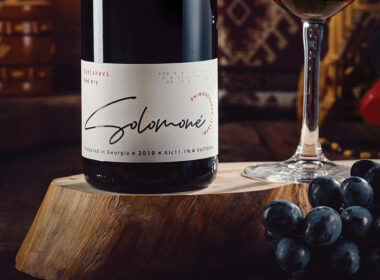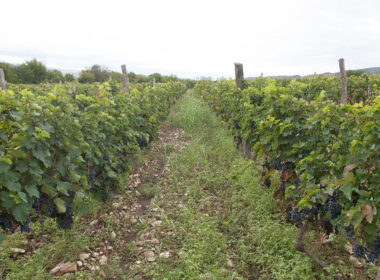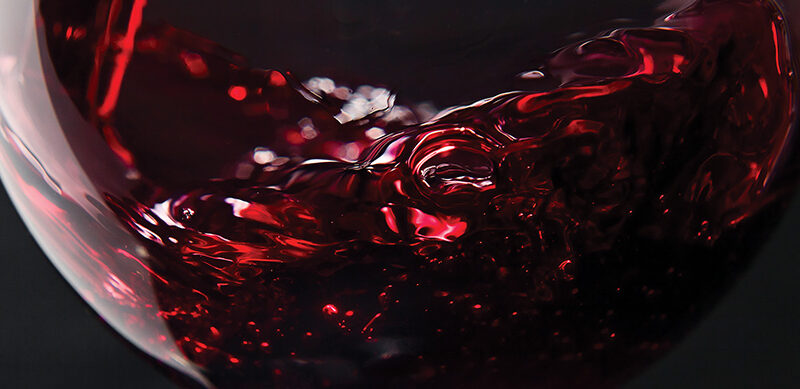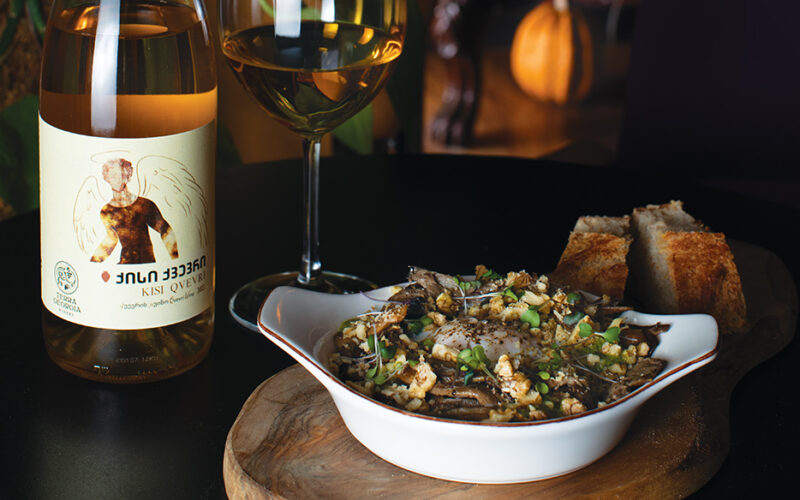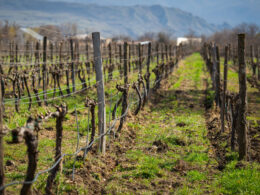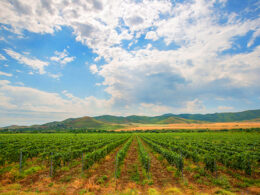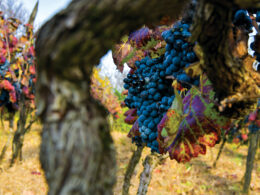| Real Opportunities for Positioning in Democratic Markets and Entering the Fine Wine Category |

| Giorgi Samanishvili. Oenologist |
As part of our main topic, we discuss the place of Georgian wine in today’s world—where we see its future, how it should be represented, and the direction we envision for our viticulture and winemaking.
From the outset, it is essential to highlight that Georgian viticulture and winemaking have never been separate from European. We have always been a part of European culture—dating back to antiquity, through the Middle Ages, and into the 19th century. The challenges our wine industry faces are rooted in the Soviet era, when centralized control, the absence of a private sector, and a closed market caused severe harm to the industry. Yet, Georgia’s winemaking tradition is so deep and resilient that we managed to preserve our centuries-old heritage. In contrast, many neighbouring regions lost their indigenous grape varieties, designations of origin, and traditions—and are only now attempting to revive them with varying degrees of success. We, however, have remained part of European culture, never experiencing a complete rupture, only temporary setbacks.
Over the past 50 years, viticulture and winemaking have become global pursuits, with emerging wine-producing countries striving to emulate traditional European regions. In this context, the more we preserve our own traditions, the more accessible and recognizable Georgian wine will become—even in new markets. After all, it is precisely these markets that are now rediscovering historic, traditional winemaking methods.

It is also important to consider where we want Georgian wine to be sold. To achieve meaningful results abroad, it is crucial that Georgian wine is well-represented domestically, as this is where information is generated and shared. Beyond that, a strong presence in Europe is essential—not only for commercial success but because we are historically and culturally a part of it. When Georgian wine stands alongside the great wines of France, Italy, and Spain, it reinforces our deep-rooted connection to European history and tradition.
We must work toward making Georgian wine available everywhere, but I want to highlight the importance of positioning in free, democratic markets. When discussing export market diversification, simply shifting from one totalitarian country to another cannot guarantee stability. Instead, prioritizing democratic markets is a far better approach, as success there depends on consumer demand rather than government policy. Entering such markets may be more challenging, but it is also far more significant for the future of Georgian wine.
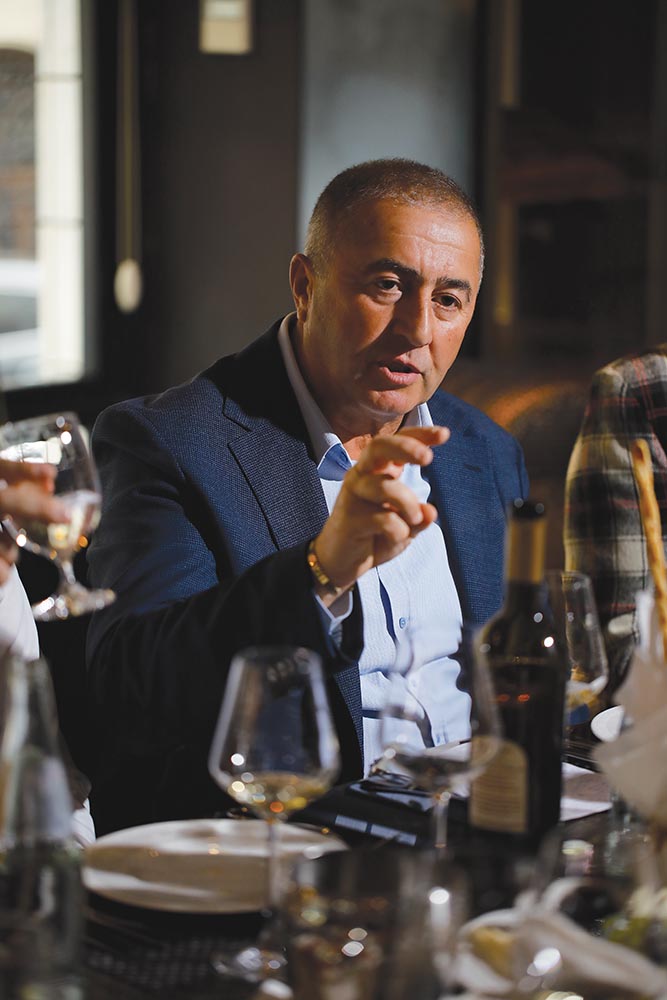
Levan Ujmajuridze | Director of the Scientific-Research Centre of Agriculture, Professor, Academician: Both European and other markets are undoubtedly important for us, but Georgia must be prepared to enter them with several key factors in mind. Giorgi already mentioned the harsh Soviet reality of the late 20th and early 21st centuries, when the focus was placed on just a few grape varieties. Yet, we are a country with 8,000 years of scientifically confirmed, uninterrupted winemaking tradition and 11,000 years of vine domestication. As the birthplace of wine, Georgia possesses an exceptional genetic pool with 525 grape varieties. While not all of them may find their place in domestic or international markets, our varietal diversity—one of the defining strengths of Georgian viticulture—is both our present and our future. It is essential that this diversity remains central to our approach.
A strong example of this is the increasing diversification of grape varieties by leading wineries, strengthening the raw material base. Key regional varieties are gaining prominence, supported by Georgia’s exceptional agro-climatic conditions. The number of Protected Designations of Origin has grown to nearly 30 and should continue to increase. Both traditional and European winemaking techniques are being applied, with a clear focus on quality over quantity.
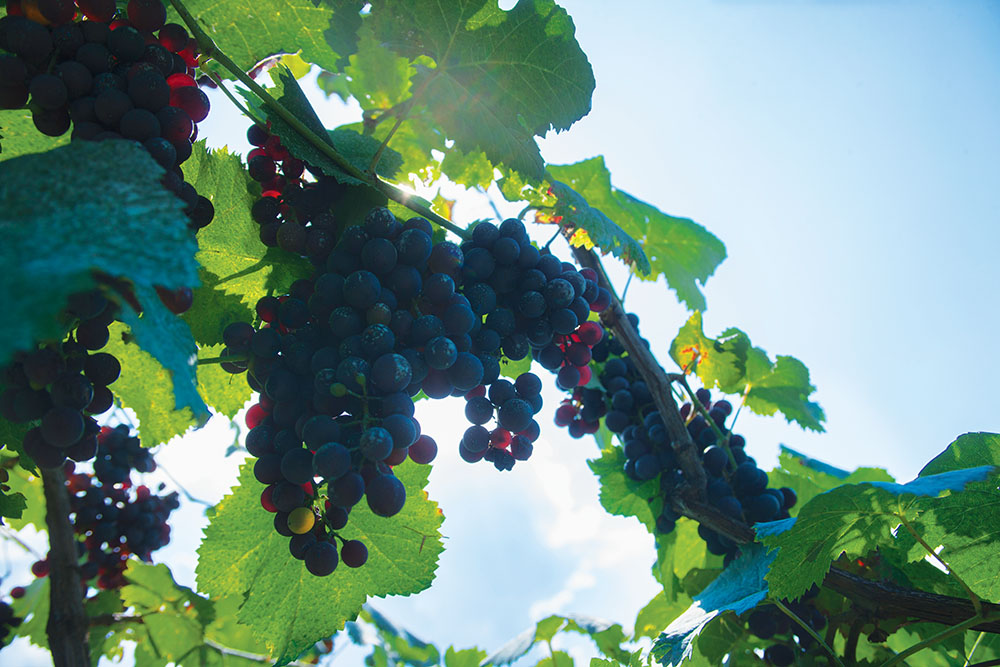
As you know, Georgia’s vineyard area is small compared to global wine regions, but with careful planning and respect for varietal diversity, we can achieve remarkable results. Our indigenous grapes have unique potential, allowing us to work with both traditional and European methods to produce outstanding wines. First and foremost, we must offer these high-quality wines to Georgian consumers and then establish a strong presence in international markets where excellence is the key to long-term success.
As I’ve mentioned, the varietal diversity of indigenous grapes is one of the key strengths of Georgian viticulture and winemaking. Alongside the well-known Saperavi and Rkatsiteli, Georgia offers many other fascinating varieties. In Kakheti, red varieties like Simonaseuli and Akhmetis Tsiteli stand out, along with whites such as Kakhuri Mtsvivani, Grdzelmtevana, and Sapena. In Kartli, Jvari, Buza, and Danakharuli are notable. Imereti offers high-potential reds like Adanasuri and Mgaloblishvili, as well as whites like Kapistoni Tetri and Kundza, which fall into the same category as Chardonnay and Sauvignon Blanc. Guria is home to Chkhaveri, Sakmiela, and Jani, while Samegrelo features Ojaleshi and Chvitiluri. Abkhazia also has unique varieties, including Kachichi, Avasirkhva, and Lakoiazhi—a red grape with a well-balanced profile that can rival some of the most renowned red varieties.
So, this potential must be strengthened as a raw material base in our country by planting more vineyards to preserve the unique varieties from both the listed regions and other winemaking areas. The key factors are high-quality grapes and a balance of both traditional and modern techniques—the rest is the winemaker’s craft, ensuring that the flavours are captured authentically, first in the bottle and then in the glass. Above all, we must be clear about who—not “what”—we are introducing to the world. Who, because wine is a living entity.
Giorgi Samanishvili: One of the key strengths of Georgian viticulture and winemaking is its varietal diversity, which once again highlights that we are a country with an ancient winemaking tradition. In all traditional winemaking cultures—regions with an unbroken history of viticulture—we find numerous local grape varieties that winemakers actively use in wine production.
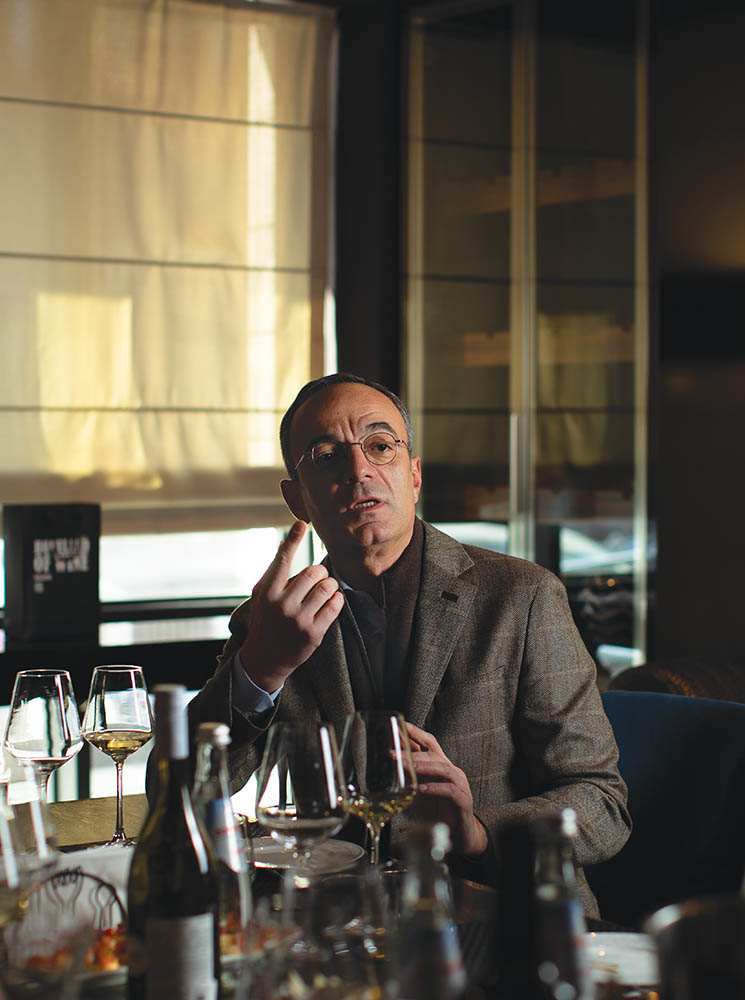
Giorgi Margvelashvili | Tbilvino: It should also be noted that Georgian winemaking has seen significant development over the past 20 years, both in terms of quality and quantity. While it’s clear that the quantitative growth mainly took place in traditional markets, where Georgia has been a major exporter for the past 100 years, it’s also important to recognize that today, focusing more on refined markets is both crucial and necessary. So, what are these refined markets? Let’s look at global import statistics: There are 10 countries (we could discuss 20, but to keep it concise, let’s focus on 10) that are the most open to foreign wines, including the U.S., the U.K., Germany, Switzerland, Japan, and the Netherlands. Russia doesn’t make the list, as it fluctuates between 11th and 12th place. One thing is clear: Georgian wine still has untapped potential in these markets. While its recognition is high among wine professionals—winemakers, writers, and industry experts—the majority of wine enthusiasts are still unfamiliar with it.
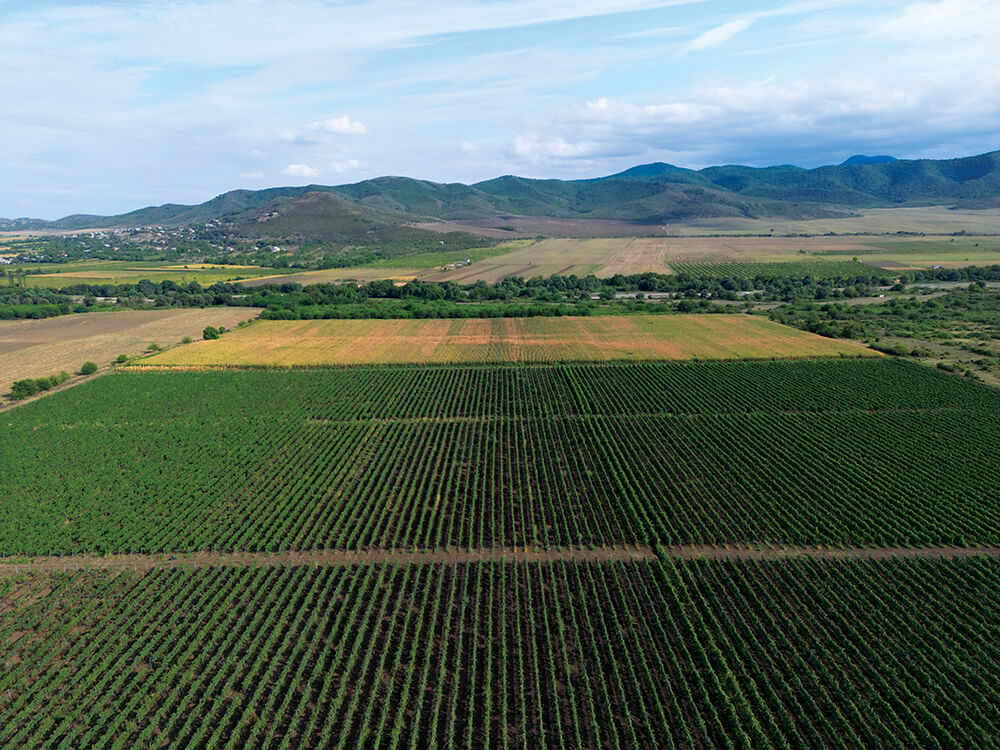
What gems do we hold in our hands to enter these markets? A centuries-old, continuous winemaking history—and this is not just history. Over the centuries, we have developed strong grape varieties and identified the best terroirs. We also produce amber wines, crafted with a unique, ancient method, that is increasingly in demand worldwide, year after year. It was us, the Georgians, who introduced the world to this distinctive winemaking technique. Yet, today, we see other countries outpacing us in sales of this category of wine. In many of the world’s top restaurants, you’ll find a category for amber wines on the wine list, featuring Slovenian or Austrian wines, but Georgian wines are notably absent from this category—yet they absolutely should be included.
As for positioning in these markets, 1) I believe it would be better if large producers focused on showcasing a single red grape variety. Despite our diversity, entering foreign markets with too many varieties might dilute the focus and confuse consumers. Since we have a powerful variety like Saperavi, we can start with it, and once consumers become familiar with this variety, they will have the opportunity to discover other Georgian red varieties. 2) As for amber wine—this is where we can introduce many white varieties to foreign markets, including Rkatsiteli, Kisi, and Kakhuri Mtsvane. However, when presenting amber wine, I believe it is more important to emphasize the style of the wine rather than the variety itself.
Giorgi Samanishvili: One of our challenges is ensuring that both Saperavi and amber wines are included in the curriculum of tasting schools. For example, at WSET, it is taught at level four, but it would be better if it were also included at level three.
Giorgi Margvelashvili: We should have the justifiable ambition to present Georgian wine in the Fine Wine category. There are producers in Georgia, including those of us gathered here, who have the capacity to produce wines in this category. In this category, we have much more room to establish ourselves than in the more democratic price categories, where we are already represented. Here, we should also aim to push our prices higher. I can confidently say that introducing our wines to the world through the high price segment of Fine Wine is the best approach, where consumers are more open to new discoveries.
Giorgi Samanishvili: I agree with you that, in terms of the Fine Wine category, we’ve definitely made progress in Georgia. Just 20 years ago, we had fewer wines in this category, and at that time, the image of Georgian wine was not as strong.
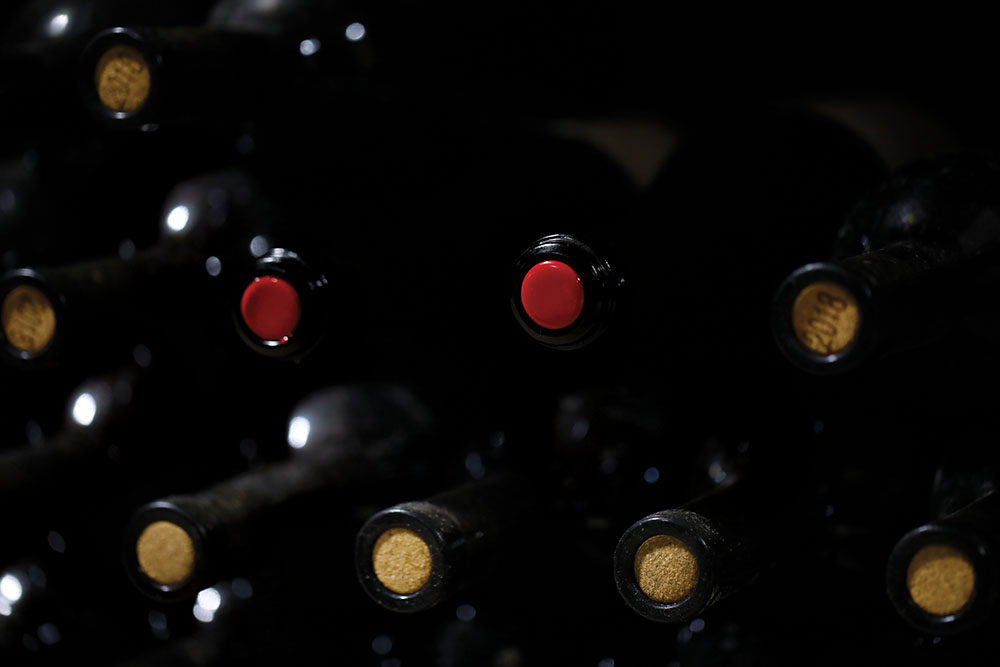
Giorgi Margvelashvili: Two years ago, at the Qvevri Wine Symposium in Tsinandali, there was a discussion about whether qvevri wine should be included in the Fine Wine category. Based on one of the studies presented there, it turns out that five criteria exist for entering this category, and I’ll start by saying that qvevri wine meets all of them: 1) The winemaker must have a clear vision or purpose for the wine (for example, continuing a family tradition or deciding to introduce a rare grape variety to the world). 2) The wine must have aging potential, evolving not only in the bottle but also in the glass. 3) The wine must have earned recognition (it should be written about by respected wine critics, win awards in competitions, etc.). 4) Sustainability – the wine must be produced in environmentally friendly conditions. 5) And perhaps the most subjective criterion: when you drink a Fine Wine, it should elevate your mood.
Giorgi Piradashvili | Winiveria, Chateau Mere : I would definitely like to touch on the issue of increasing the awareness of Georgian wine in the countries mentioned by Giorgi Margvelashvili. While there has been quantitative growth, in principle, it’s still the same level we’ve been at for the past few years.

Over the past 50 years, wine has become a strategic product for many countries. For our country, however, it has always been such a product. That’s why I believe industry representatives should develop a strategy that will make Georgian wine even more recognizable, both within the country and beyond its borders. Every professional in the wine sector is an ambassador of Georgian wine to visitors arriving in Georgia, so we must always be able to present our wine with dignity. This approach will yield good results in terms of increasing awareness. We cannot afford to fall behind those countries that are constantly striving for progress.
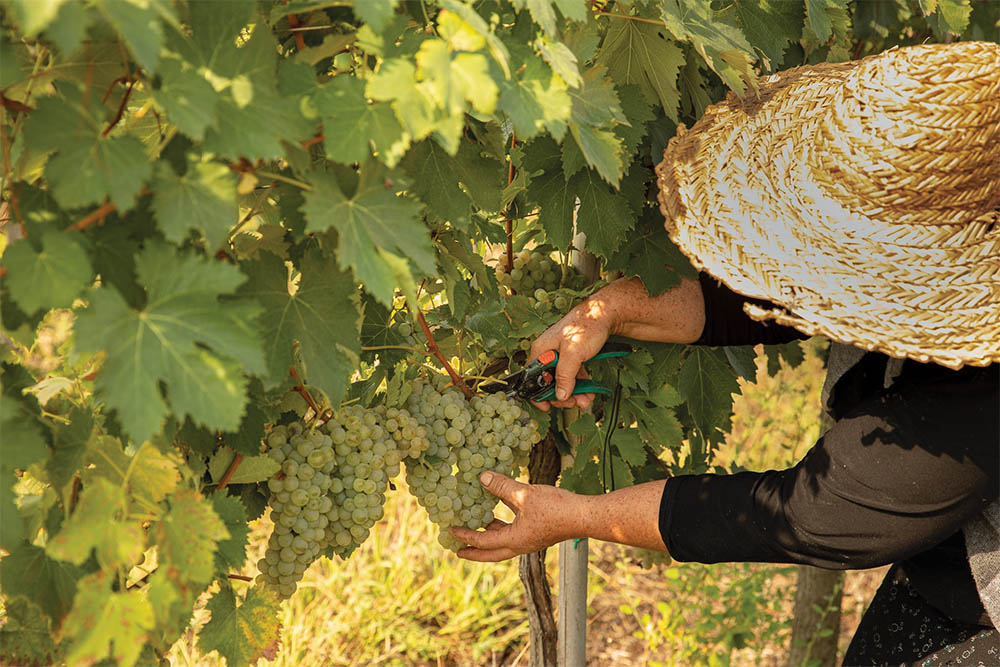
As for Mr.Margvelashvili’s opinion regarding positioning on foreign markets with just one grape variety and category—unlike large producers, I don’t see a problem for medium and small entrepreneurs entering these markets with multiple varieties. I am in favour of maximum diversity, as it sallows consumers to talk more about Georgian wine.`
Levan Ujmajuridze: Especially considering that, in terms of grape varieties, we have boundless potential.
Giorgi Piradashvili: We need to break down all stereotypes and evolve in a way that allows us to effectively cater to the tastes of wine enthusiasts we seek to attract as our consumers. For this, we must offer them a high-quality, interesting product.
Levan Bandzeladze | Winery Marbano: I agree that Georgian wine certainly has the potential to be recognized in the high-quality wine category. It’s also evident that many winemakers have focused on quality, especially in the last decade. In fact, vineyard planting has become more precise across regions, with specific grape varieties being matched to the most suitable soils.

In addition to Marbano, we export wines from 37 small and medium-sized Georgian producers to European countries, offering a diverse and high-quality assortment. The majority of our exports go to the Baltic states (Latvia, Lithuania, Estonia), as our partner is Latvian, and both Georgia and Georgian wine are well-known in Latvia. Additionally, our wines are distributed in Portugal, Spain, Germany, and Austria. We are also working on creating a hub in Germany to facilitate the easier entry of Georgian wines into Central Europe.
In addition to Marbano, our portfolio includes wines from Villa Mosavali, Solomonshvili Winery, Nareklishvili Wine Cellar, Tiko Estate, Napheri, Ambra, Solomone, and other wineries, offering both still and sparkling wines, as well as Pet-Nats from across Georgia. Our main goal is to enter the HoReCa sector, which we are actively working towards. Our sommeliers regularly organize tastings of Georgian wines paired with Georgian dishes, and this approach has proven to be effective. Over the past two years, we have worked hard to ensure that Georgian wines are featured in many renowned restaurants, including Michelin-starred ones, as well as wine bars and shops. When it comes to high-end restaurants, Georgian wine is presented alongside French and Italian wines.
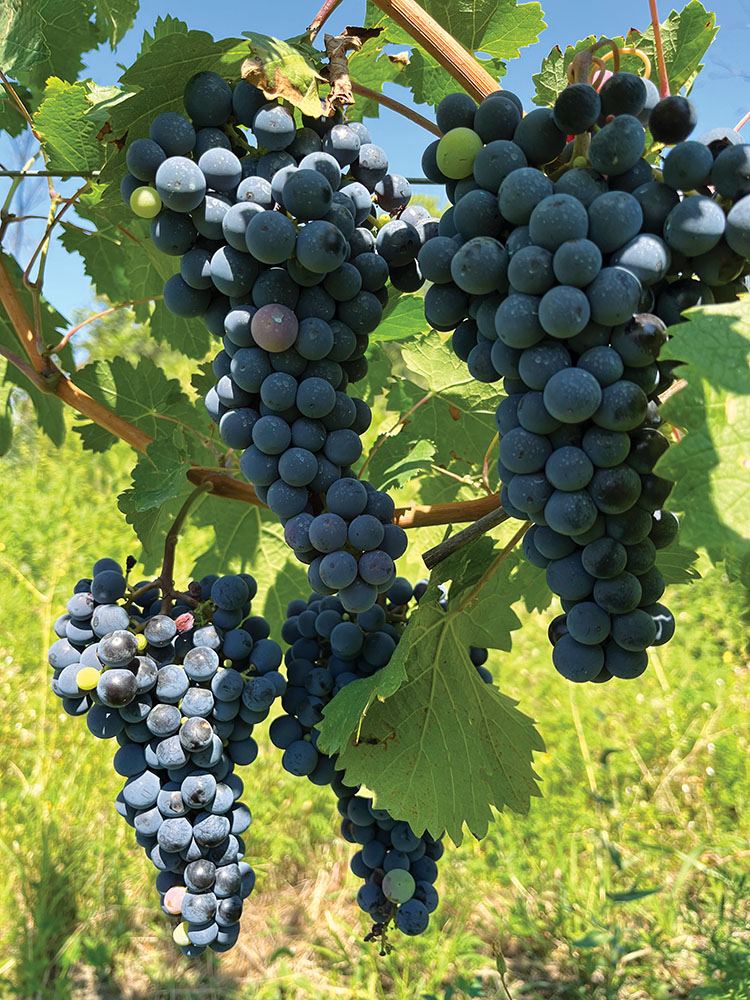
The diversity of our assortment greatly helps us adapt to a wide range of tastes, both for the establishment and the consumer. In the near future, we plan to open two Georgian wine shops in Latvia. Over the next four to five years, we aim to open up to ten Georgian wine shops in various cities across Europe. However, the biggest challenge in European countries is that the awareness of Georgian wine is still not at the desired level, and we definitely have a lot of work to do in this area.
Giorgi Samanishvili: What Levan mentioned confirms the views of Giorgi Margvelashvili and Giorgi Piradashvili that a correct and appropriate strategy is needed for each segment. I would also add that in the segment Levan has chosen—small and medium-sized producers and varietal diversity—it’s crucial that the wines are carefully selected.
All of this further emphasizes how important the involvement of professionals from the private sector is and that they should be the ones doing this, not the state or quasi-state organizations. The mistakes that might occur are often likely to come from state organizations, as they have fixed selection criteria and lack flexibility. The private sector, on the other hand, has the opportunity to make independent decisions.
Iago Bitarishvili | Iago’s Wine: As my colleagues have already pointed out, there are numerous arguments for why the European market is important for Georgian wine. A market always exerts a significant influence on both the product and the country. My colleagues have also discussed the negative impact of the Soviet era. However, Georgian wine was part of European culture both before and after the Soviet period, as evidenced by ancient wineries such as Mukhrani and the Tsinandali Estate. We also remember well that 15 years ago, there wasn’t a single wine festival in Georgia, nor were there any wine bars. The process of reconnecting with Europe and European values revived this culture in our country. The vineyard and wine are such an essential part of our identity that, despite all the challenges, we managed to preserve them. Even though, during the Soviet period, vineyards in some regions were replaced by other crops, the strength of folk selection ensured that the old grape varieties were preserved and maintained.
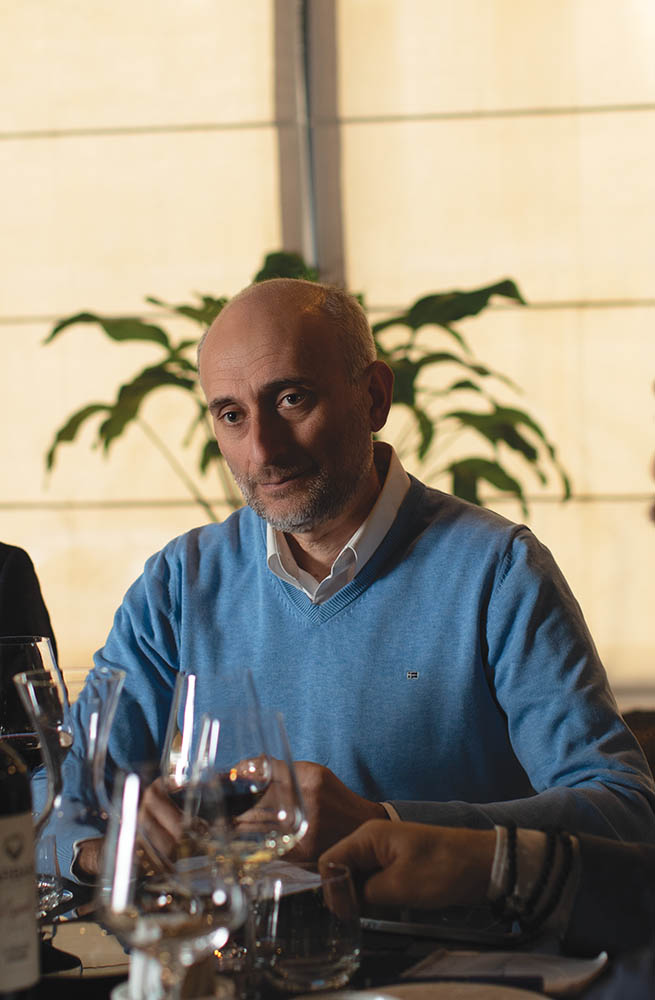
Today, we have undoubtedly made significant progress. However, this progress does not fully satisfy us. Compared to where we were 20 years ago, we have certainly taken great steps forward. Just look at the number of wine festivals held in the country now, how Tbilisi is filled with wine bars, and, most importantly, the improvement in the quality of wine. For this progress, those of us participating in this discussion have done everything we could. But it will be the new generation, educated in Europe, who will do even more—something that small wineries, unfortunately, didn’t have the opportunity to do in the past.
We also observe how the wines, which are primarily focused on traditional markets, differ both in style and labeling from those that enter the European market. This is because the European market has an entirely different culture, one that shapes both business practices and the quality of wine itself.
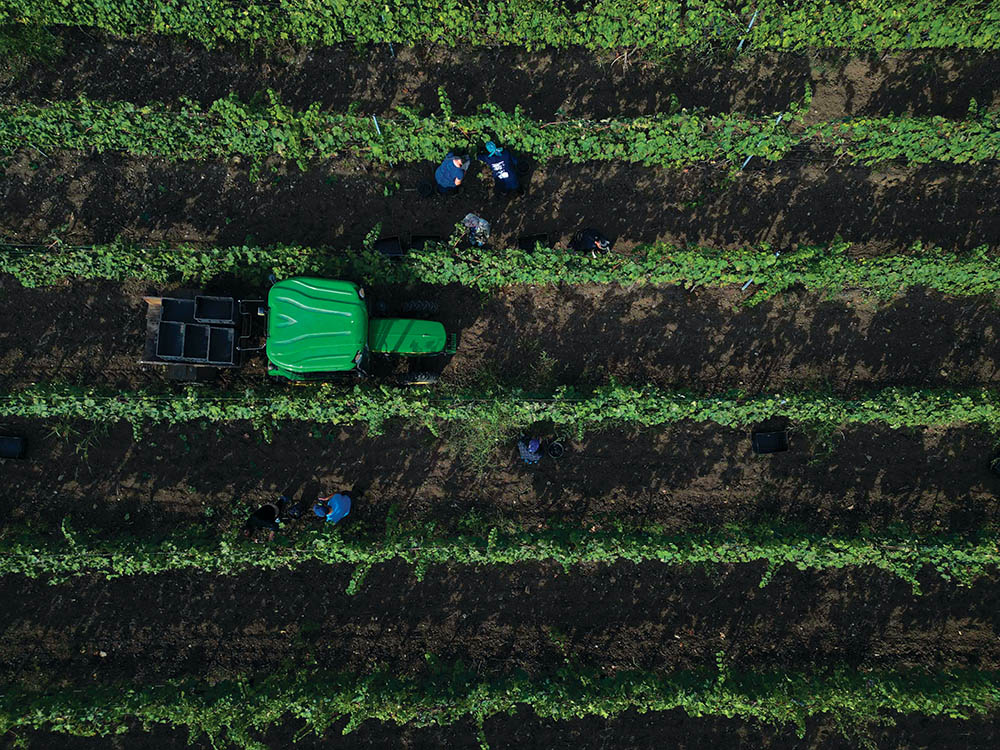
The biggest challenge in this market remains awareness—of our country, our wine, and our identity as a wine-producing nation. Neither small nor large wineries can tackle this alone, making active state involvement essential. Still, progress is evident. I remember when, at exhibitions and festivals, mentioning qvevri was met with blank stares. We had to explain that it was a clay vessel similar to an amphora. Today, the landscape has changed—both Georgian wine and qvevri are far more widely recognized.
We are of great interest to Europe, and here’s why: While we fully embrace European values and culture, our wine retains its distinct character, history, and winemaking techniques—not to mention our unique grape varieties.
Imagine sitting in a renowned restaurant in Paris or London and being offered a wine from a particular country. Naturally, we’d wonder—why this wine? Is it just because it’s Chardonnay, or is there a deeper story? Georgian wine, on the other hand, carries a rich history and a distinct sense of romanticism—it’s crafted in clay vessels buried underground, using ancient techniques and indigenous grape varieties nurtured in unique terroirs. Perhaps that’s why some of our wines have earned a place on the menus of prestigious restaurants without the need for marketing—because there is a genuine demand. Yet, while these achievements are significant, they alone cannot define Georgia’s image as a wine country. There is still much work to be done.
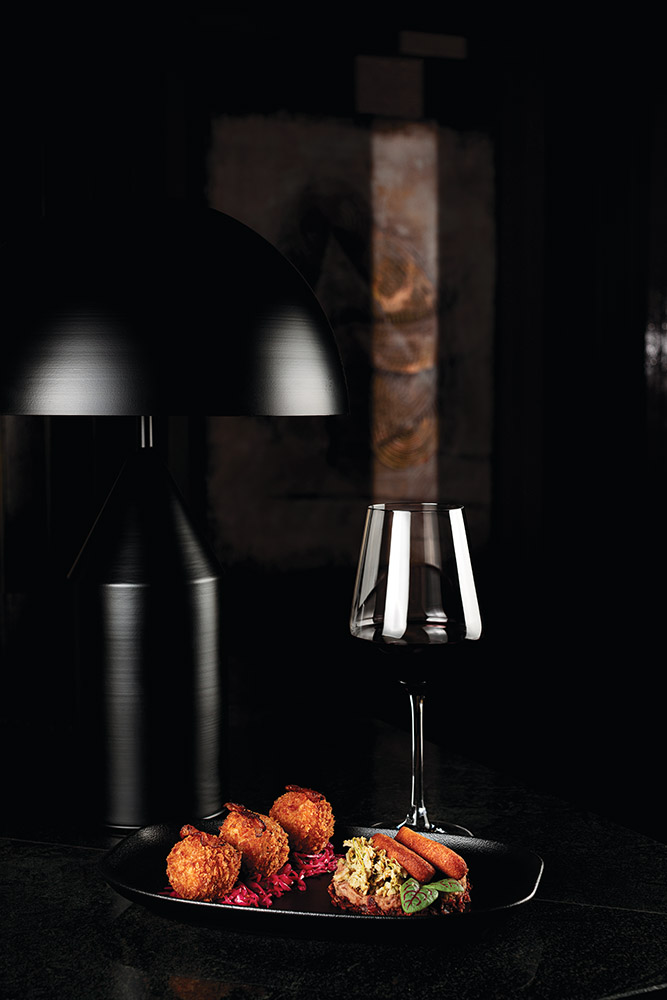
As for natural wine, it is absolutely a separate category, and those of us dedicated to its production have undoubtedly played a role in increasing awareness of Georgian wine. Years ago, when I first began exporting, I had never even travelled abroad. It all started when a representative from the Italian company Velier came to Georgia in search of wine.
In 2012, I visited France’s Loire Valley for the first time. At the time, there were only two natural wine festivals. This February, when I returned, there were twelve in just four days. What does this indicate? It reflects the growing demand, including among top restaurants, and the increasing attention natural wines are receiving from major wine publications. Natural wine is a distinct and essential category. If Georgian natural wine producers were to shift to conventional winemaking, importers would stop buying their wines, and they would lose access to international markets. This would cost Georgia its place in these high-demand markets, making way for other countries to take over.
Natural wine is a separate market segment, and I believe we should not interfere with its growth, as it is finding its own way. Our main goal in the international market should be to see more high-quality Georgian wines emerge, which will help drive the success of others.
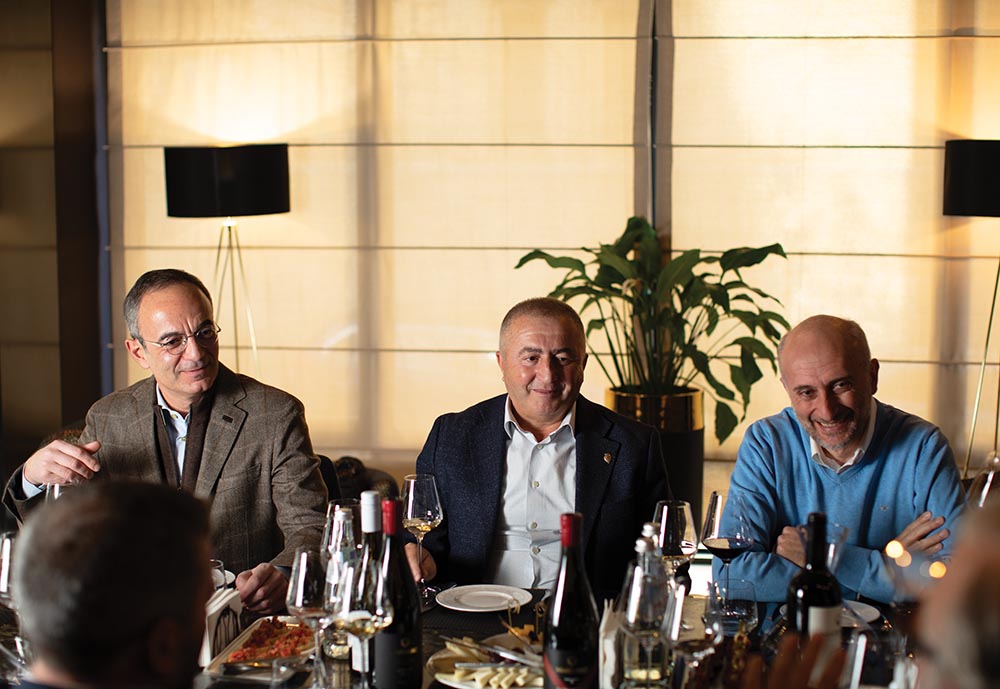
Giorgi Samanishvili: I’m well-acquainted with this subject. I’ve attended numerous exhibitions and continue to do so because, as a professional, I’m always keen to learn from the approaches of natural wine producers.
Georgia has always been a leader at natural wine festivals. Winemakers from France, Spain, and other major wine-producing countries (with the French being particularly active) would visit our stand to understand how to produce such unique wines. Even then, the signs of success were clear—those seeking this style of wine would come to Georgia and find it in many Georgian cellars. At that time, the first generation of natural wine producers became extremely popular in Georgia; thus, the industry began to grow rapidly. We also observed that some producers of “so-called” natural wines tried to enter the market, but through a natural selection process, only those who truly embraced the style remained. Today, this sector continues to thrive.
Levan Ujmajuridze: We must be honest and acknowledge that, while a lot is being done in our country in this regard, there is still much to be done. Abroad, raising awareness of our viticulture and winemaking is crucial, and it truly requires a door-to-door approach.
Giorgi Margvelashvili: In response, I can give the example of the UK, where Tbilvino has a good history. In the early 2000s, our wine first appeared in the Majestic Wine shop at the Vinopolis wine museum (Majestic Wine is one of the largest and oldest wine store chains in the UK). Then came Marks & Spencer, which selected our qvevri Rkatsiteli for its chain 11 years ago. We really focused on positioning ourselves in the UK market two years ago. We also have a significant partner there, Berkmann Wine Cellars LTD. Initially, our wine was seen as one of the many exotic wines in their assortment.
Later, we agreed to approach the issue more seriously and conducted a study, which revealed that only 2% of British respondents had tried Georgian wine, 90% were open to new experiences, and more than 50% had a positive attitude toward Georgian wine. We saw this as a great opportunity. Together with our partners, we allocated a budget and launched a communication campaign aimed at reaching as many people in the HoReCa sector as possible and offering them the chance to taste our wines. This was done over the past two years, resulting in a 70% increase in sales. The British never wait for trends to be created they create them themselves, as they are always confident and never doubt their taste.
It is important to emphasize the role and significance of Georgian gastronomy. Georgian wine should be enjoyed with Georgian dishes, particularly in the growing number of Georgian restaurants abroad. This trend positively influences the promotion of both our wines and cuisine. Additionally, Georgian wine pairs excellently with both European and Asian cuisines. A great example is Iago’s Wine, which can be found in restaurants across the world.

When drinking the wine of a particular country, you’re also drinking its culture and history. This is why it’s so important for tourism in Georgia to develop further, to make our country as appealing as possible to foreigners.
Giorgi Samanishvili: It’s essential to highlight the international organization GIZ, which has been active in Georgia for many years and has had the most significant impact on the wine sector. With their support, a wine laboratory, tasting commission, legislative reforms, training programs, and other initiatives were established. Their project, which focused on the development of the private sector in winemaking, deserves particular mention. Before the Russian embargo, GIZ was the primary source of support for the industry. Exchange programs were held, allowing our winemakers to visit various countries while winemakers from other countries visited Georgia.
Iago Bitarishvili: Just as a country’s image is vital for its wine, the quality of the wine is equally crucial in shaping the country’s image.
https://www.instagram.com/homelandofwinemagazine
https://www.instagram.com/marbanowinery
https://www.instagram.com/winiveria.ge


